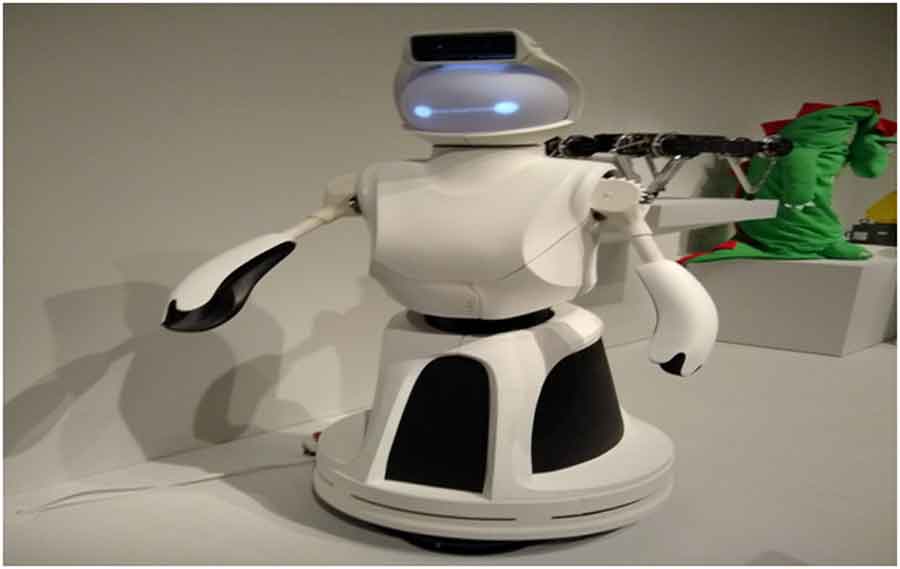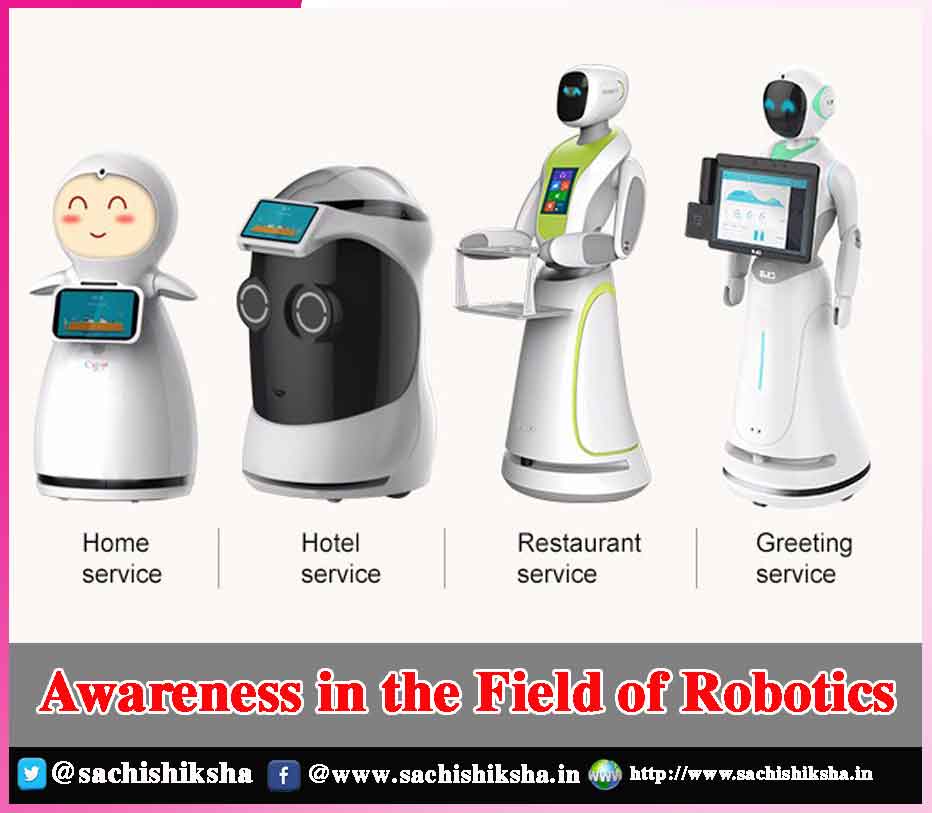Awareness in the Field of Robotics
Introduction: Robotics is the branch of technology that deals with the manufacture, design, construction, operation, and application of robots. In the modern world, Robotics is a rapidly growing field and it continues to research and build new robots that serve various practical purposes.
Robotics (Genext): Robots Can Be Our New Co-workers?
Table of Contents
Robot:
 A “robot” is any automatically operated machine that is used to replace human effort. It may or may not resemble a human being in appearance or perform a function in a manner that a human performs. Hence, robots are made to make our life easier. Robots are usually autonomous or semi-autonomous.
A “robot” is any automatically operated machine that is used to replace human effort. It may or may not resemble a human being in appearance or perform a function in a manner that a human performs. Hence, robots are made to make our life easier. Robots are usually autonomous or semi-autonomous.
A “robot” contains a movable mechanism, influenced by sensing, planning, actuation, and control components. It is a machine that can be electronically programmed to carry out a myriad of physical tasks or actions.
Three Laws of Robotics:
The word ‘Robotics’ was first used by Isaac Asimov in his science fiction story “Liar” published in 1941. He introduced three laws of robotics. These Laws of robotics are:
First Law:
A robot may not injure a human being or, through inaction, allow a human being to come to harm.
Second Law:
A robot must obey the orders given by human beings except where such orders would conflict with the First Law.
Third Law:
A robot must protect its existence as long as such protection does not conflict with the First or Second Laws.
Varied Usage of Robots:
Today commercial and industrial robots are widely used for performing jobs more accurately and reliably than humans because of their versatile build-up. Robots are also employed in jobs that are too dangerous, monotonous, or nearly impossible for humans. Robots are now widely used in manufacturing, medical branch, packaging, mining, space exploration, surgery,
laboratory research, mass production of consumer and industrial goods, etc. A very important kind of robot that is being researched and developed is a military robot. Military robots are robots or remote-controlled devices designed for military usage. They can be UAVs, Drones, or even humanoid soldiers. Robotics are the future of warfare. Robots would form a large part of Hybrid warfare.
Military Robots:
The Defense Research and Development Organisation (DRDO) plans to develop super-intelligent robots to fight alongside human troops. The Defense Research and Development Organization (DRDO) announced its intention to develop robotic soldiers for military applications. Below are some military robots being used by India.
Daksh is a battery-operated remote-controlled robot on wheels and its primary role is to recover bombs. It also has a shotgun. Developed by DRDO, it is fully automated.
Rustom is an unmanned combat air vehicle (UCAV) being developed by DRDO. The UCAV will be capable of releasing missiles, bombs, and precision-guided munitions.
Nishant is another Unmanned Aerial Vehicle (UAV) developed by India’s ADE (Aeronautical Development Establishment), a branch of DRDO for the Indian Armed Forces. It is used for reconnaissance, surveillance, target designation, artillery fire correction, and damage assessment. Panchi is UAV Nishant’s new version with wheels. It can take off and make landings like a regular aircraft. It performs all functions while staying in the air.
Robotics & Artificial Intelligence:
Robotics must not be confused with Artificial intelligence. However, both of these do overlap to an extent. For example, AI algorithms are used in Google searches, GPS navigation, self-driving cars, facial recognition, autocorrect, mapping, chatbot, etc.
Nanorobotics is an emerging technology that deals with the creation of machines or robots whose components are at or close to the scale of a nanometre (10^−9 meters). Nanomachines are still largely in the research and development phase.
Entire Robots:
Researchers also hope to be able to create entire robots as small as microorganisms like viruses or bacteria, which could perform tasks on a tiny scale. Possible applications include micro surgery on the level of cells to reach the nucleus and the DNA and to treat genetic diseases and cancers with no cure so far,
utility fog which is a hypothetical collection of tiny robots that can replicate a physical structure to perform dynamic functions, manufacturing, weaponry, space surveys, packaging and even in education.
Varied Applications of Robots:
There are numerous other applications of Robots some of these are-
Industrial Robots:
Due to their speed, accuracy, reliability, versatility, and capability to endure heavy weights are widely used in the manufacturing of cars. Difficult tasks such as wielding, material handling & assembling can be performed better with great accuracy and precision by an industrial robot than a human. They are also used in electronics and are called pick-and-place robots.
Pick & Place Robots:
Such robots are used in the mass production of printed circuit boards (PCBs). They help in removing tiny electronic components from trays and placing them onto PCBs with great precision. Such robots have outperformed a human in terms of speed and accuracy.
Mobile Robots:
These robots are used as a means of transport as they act as automated guided vehicles with scanning lasers that are used to transport goods around places like warehouses, godown container ports, or hospitals.
Telerobots:
They are a breakthrough invention because like unmanned aerial networks they can be used to perform dangerous tasks in inaccessible places. It helps the military to defuse bombs from afar.
Robotic Surgery:
The use of robots in health and surgery exemplifies the pinnacle of where science has reached. A doctor through telesurgery can perform surgery on a patient even though they are not physically present there. The advantages of robotic surgery include great precision, less blood loss, and smaller incisions. It also reduces the incidence of post-surgical complications and rapid recovery.
Conclusion:
Thus, robots can be used for various functions like space exploration, deep sea exploration, combat roles in the military, surgeries, disaster management, and rescue operations. Indeed robots are a boon to mankind and their benefits should be tapped positively for the welfare of society. However, this technology mustn’t be exploited and misused so that it becomes a bane to mankind.
Robot ethics must be diligently followed. They try to address the question if robots are a threat to mankind and if they can replace humans. Well, this is a controversial issue and our article doesn’t concern about that right now.













































